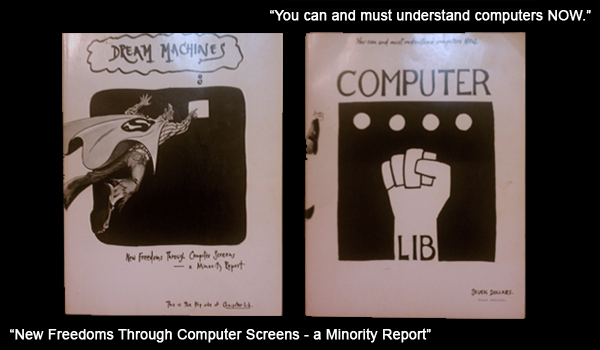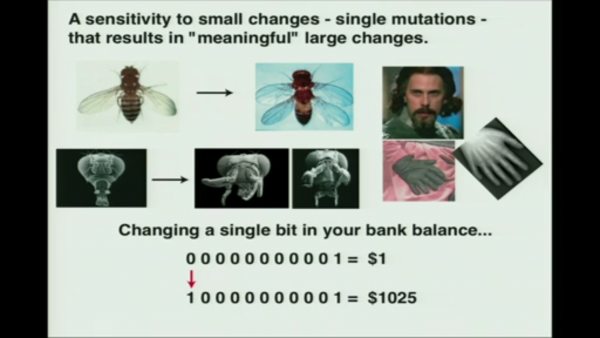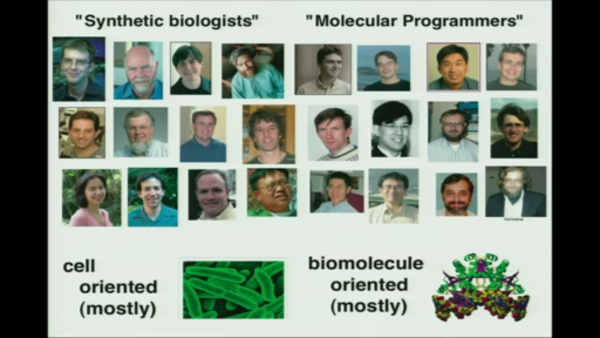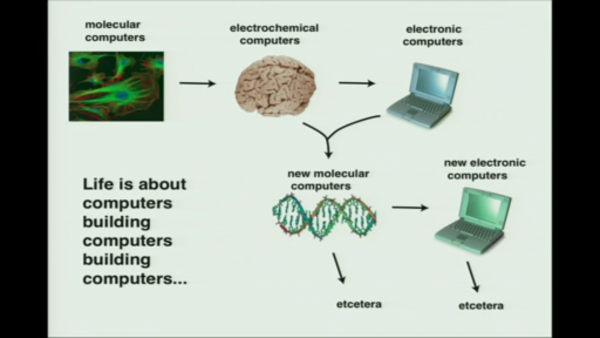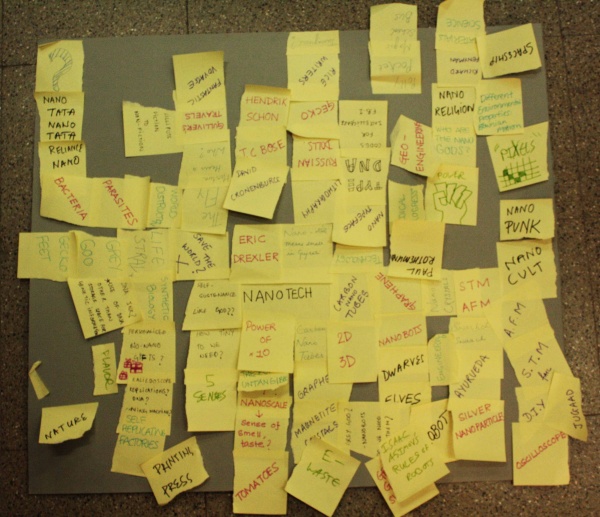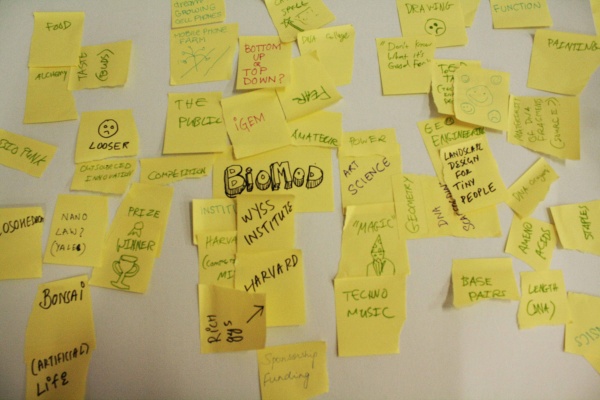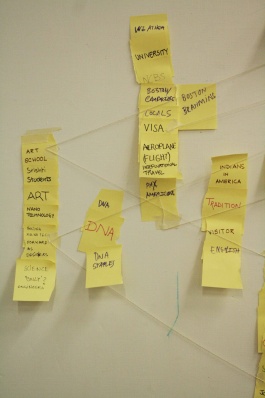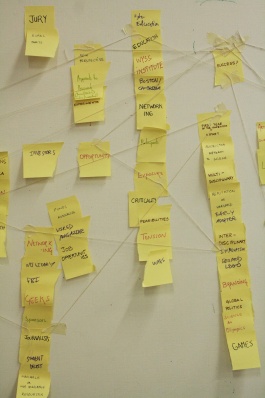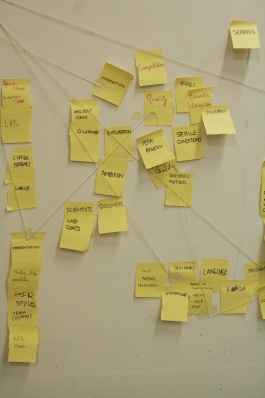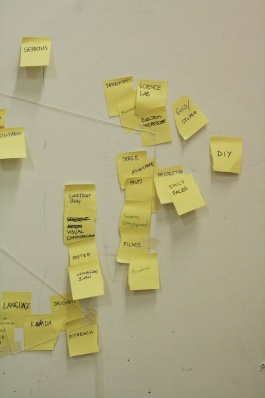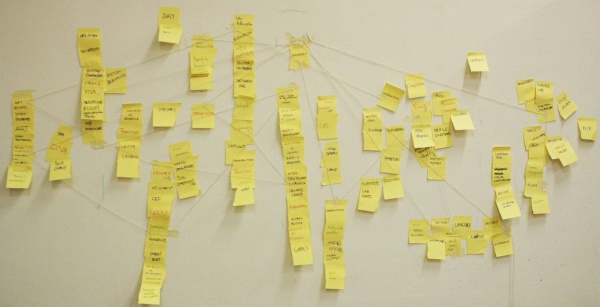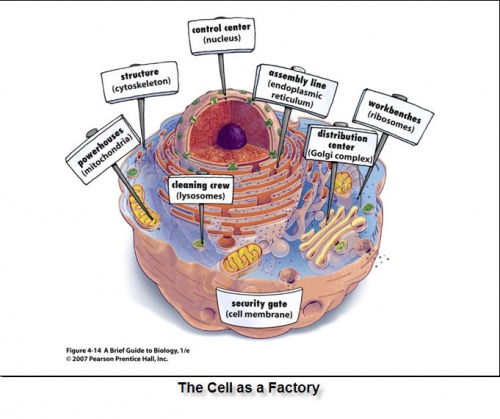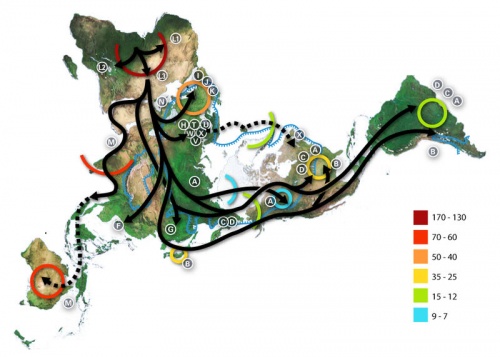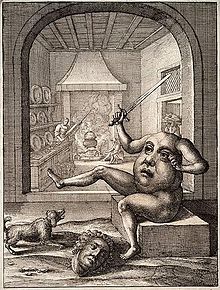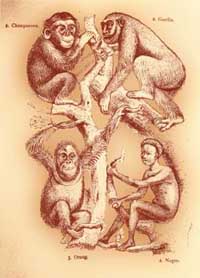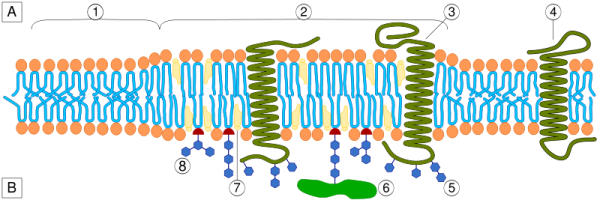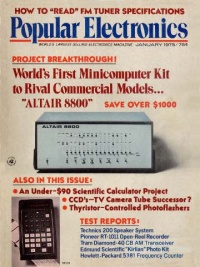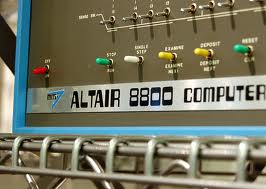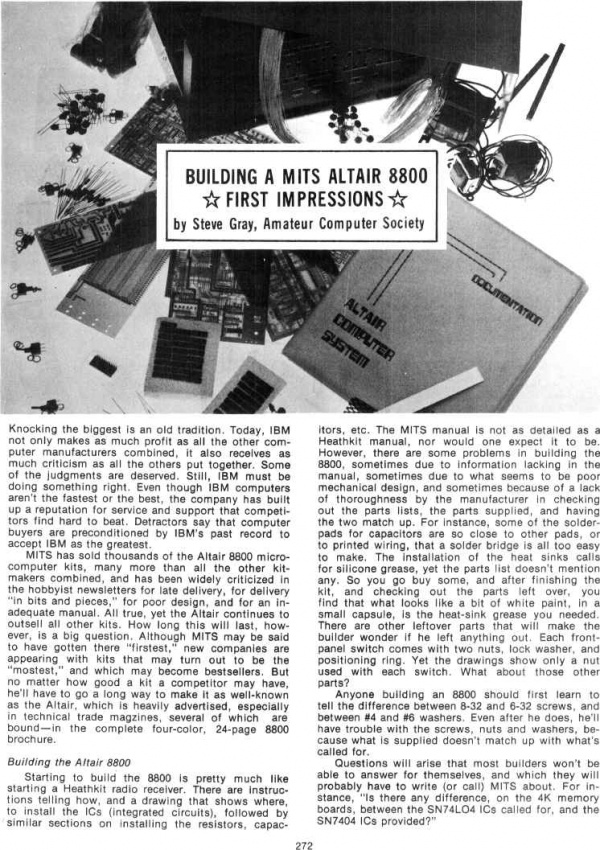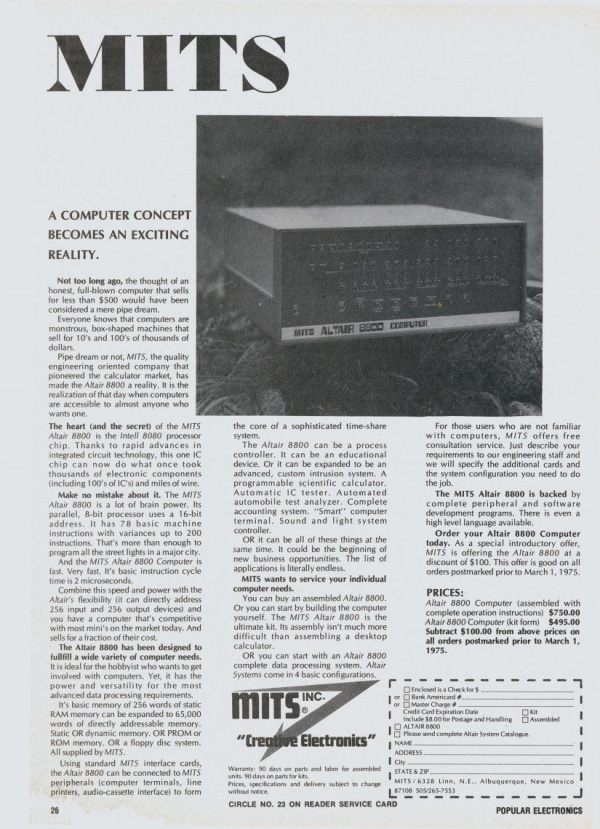Nano Design Workshop
Contents
- 1 Edited Version for Competition
- 2 Nanotech & Metaphors
- 3 Readings
- 4 Cellularity by James King
- 5 Paul Rothemond TED Talk Notes
- 6 Actor Network Mapping Exercise
- 7 Technological and mechanical metaphors for the Human Body:
- 8 Body/Cell Metaphors: Visual Research
- 9 Natural Selection & Machines ?
- 10 STRUCTURAL DNA NANOTECHNOLOGY
- 10.1 SCALE & THE FRACTAL DIMENSION
- 10.2 Complexity & Control
- 10.3 HCI of Nanotechnology
- 10.4 Technology is Magic
- 10.5 2 Ways of Looking at Technologies
- 10.6 Appropriate Nanotechnology?
- 10.7 How do you use DNA nanorods on the nanoscale?
- 10.8 Architecture Types
- 10.9 History of NanoTech
- 10.10 Tools Available
- 10.11 Why This Took Off (in Chemistry)
- 10.12 DNA scaffolds in 1D
- 10.13 DNA ORAGAMI - SHOULD BE CALLED DNA KNITTING!
- 10.14 DNA Architecture with 2D Scaffolds
- 10.15 Assembly in 3D: DNA polyhedra
- 10.16 Can we do something useful with these structures
- 10.17 Dynamic Architectures
- 10.18 Unusual Structures of DNA and Their Uses
- 11 STABILITY OF DOMAINS
- 12 WHAT DOES DNA WANT - AGENCY
- 13 WHAT HAPPENS TO THE NANOBOTS?
- 14 CAN THE SMALLER STRUCTURES BE LEFT IN THE BODY?
- 15 THE THREE
- 16 Laboratory techniques with potential use for computation
- 17 Nanotechnology in Fiction
- 18 Building our own PCR
- 19 MITS ALTAIR-To start with!
Edited Version for Competition
Nanotech & Metaphors
- Casting Spells
- Magic
- Living Factories / Foundaries
- Speed of Computing (Keeping up with Moore's Law)
- Xeno's Paradox of Reality (Borges -> The Map is Not The Terrain)
- Jevon's Paradox of Biocomputing / Simulation?
- It's fast: But what is it for?!?
- The World's Slowest Computer
- revisiting Ted Nelson: Computer Lib / YOU NEED TO UNDERSTAND COMPUTERS NOW! (Do we/ Did we?) http://en.wikipedia.org/wiki/Computer_Lib_/_Dream_Machines
- Send the Acorn, Not the Tree
Readings
http://www.pnas.org/content/107/51/21996.abstract - All-DNA finite-state automata with finite memory
DNA nanomachines
JONATHAN BATH AND ANDREW J. TURBERFIELD*
We are learning to build synthetic molecular machinery from DNA. This research is inspired by biological systems in which individual molecules act, singly and in concert, as specialized machines: our ambition is to create new technologies to perform tasks that are currently beyond our reach. DNA nanomachines are made by self-assembly, using techniques that rely on the sequence-specifi c interactions that bind complementary oligonucleotides together in a double helix. They can be activated by interactions with specifi c signalling molecules or by changes in their environment. Devices that change state in response to an external trigger might be used for molecular sensing, intelligent drug delivery or programmable chemical synthesis. Biological molecular motors that carry cargoes within cells have inspired the construction of rudimentary DNA walkers that run along self-assembled tracks. It has even proved possible to create DNA motors that move autonomously, obtaining energy by catalysing the reaction of DNA or RNA fuels.
All-DNA finite-state automata with finite memory
Zhen-Gang Wanga,1, Johann Elbaza,1, F. Remacleb, R. D. Levinea,c,2, and Itamar Willnera,2
Biomolecular logic devices can be applied for sensing and nano- medicine. We built three DNA tweezers that are activated by the inputs Hþ ∕OH− ; Hg2þ ∕cysteine; nucleic acid linker/complemen- tary antilinker to yield a 16-states finite-state automaton. The outputs of the automata are the configuration of the respective tweezers (opened or closed) determined by observing fluorescence from a fluorophore/quencher pair at the end of the arms of the tweezers. The system exhibits a memory because each current state and output depend not only on the source configuration but also on past states and inputs.
An autonomous molecular computer for logical control of gene expression
Yaakov Benenson1,2, Binyamin Gil2, Uri Ben-Dor1, Rivka Adar2 & Ehud Shapiro1,2
Early biomolecular computer research focused on laboratory- scale, human-operated computers for complex computational problems1–7. Recently, simple molecular-scale autonomous pro- grammable computers were demonstrated8–15 allowing both input and output information to be in molecular form. Such computers, using biological molecules as input data and biologi- cally active molecules as outputs, could produce a system for ‘logical’ control of biological processes. Here we describe an autonomous biomolecular computer that, at least in vitro, logi- cal l y anal yses t he level s of messenger RNA speci es, and in response produces a molecule capable of affecting levels of gene expression. The computer operates at a concentration of close to a trillion computers per microlitre and consists of three programmable modules: a computation module, that is, a stochastic molecular automaton12–17; an input module, by which specific mRNA levels or point mutations regulate software molecule concentrations, and hence automaton transition prob- abilities; and an output module, capable of controlled release of a short single-stranded DNA molecule. This approach might be applied in vivo to biochemical sensing, genetic engineering and even medical diagnosis and treatment. As a proof of principle we...
Cellularity by James King
Please watch this video and think about the construction of metaphors regarding "life", who and how gets constituted as life and non-living, and how your BioMod machines work in this equaction
http://www.james-king.net/projects/cellularity
Paul Rothemond TED Talk Notes
While watching the Paul Rothemond's TED talk these are some of the thoughts and questions that arose.
Movies to watch: Blade runner
Ted talks to watch:
http://www.ted.com/talks/lang/eng/paul_rothemund_casts_a_spell_with_dna.html
http://www.ted.com/talks/lang/eng/paul_rothemund_details_dna_folding.html
Books to read:
Shaping things Cradle to cradle
Research James King
Thoughts to write about:
What is life?
Can life be categorised by reproduction, metabolism and/or evolution?
“Life performs computation” How does that quantify or qualify life?
What are your views on metaphors, are they serious, can they be taken seriously?
Who is “Watson” in the field of nanotechnology?
When altering DNA “a sensitivity to small changes – single mutations - that result in ”meaningful” large changes”, what are the consequences, what does it take to alter DNA to produce a desires mutation?
How accurate is the comparison between DNA alterations to the binary system in banking?
“Can we write molecular programs to build technology?”
What is the difference?
Is like about computers building computers?
Today how long do you use a cell phone?
Was it designed obsolesce? So in a way it was designed to die? What does it mean for a phone to die?
In the future if it was possible to grow a phone from a seed, when would the phone know when to stop growing and when would it know to die, and how to die?
Research “Lifecycle Analysis” How would or could this change with the introduction of molecular programming? What would the death of a product mean?
Why DNA? Because “DNA is the cheapest, easiest to understand and the easiest to program material” to create Nano scale computers. What is your opinion of this?
Look for the Moore’s Law Graph, one that validates that if it were to be true where nanotechnology would have to kick in.
What is innovation?
Can you write a nano virus?
Look up Tony Fry, What are his views on the designers of the future?
Actor Network Mapping Exercise
Some basic mindmapping on Nanotech and Biomod:
Networking mindmaps on success: BIOMOD-nanotechnology (Click on each of the four sections to have a better look at the pointers)
An overview:
Few links over researching :
Can art make nanotechnology easier to understand? http://news.nationalgeographic.com/news/2003/12/1223_031223_nanotechnology.html
Six challenges for molecular nanotechnology: http://www.softmachines.org/wordpress/?p=175
Feasibility arguments for molecular nanotech : http://www.acceleratingfuture.com/michael/blog/2008/03/feasibility-arguments-for-molecular-nanotechnology/
Dna origami ? : http://www.nature.com/nindia/2011/110622/full/nindia.2011.86.html & http://www.nature.com/ncomms/journal/v2/n8/full/ncomms1452.html
Nano Art Competition! : http://www.nanowerk.com/news/newsid=3811.php
Technological and mechanical metaphors for the Human Body:
Comparisons of the body to machine are sometimes seen in a negative light; endemic of a mechanistic worldview which is overly-reductive approach to something as complex and beautiful as the human body.
Yawn.
Ok, a "yawn" is over-trivialising the anti-mechanist critique, but I want to argue that kid's body books employing robot metaphors are a bit more complicated than that (personally, I think you can say the same of Blake's Newton, but that's another story). My central point is that mechanical analogies provide a diverse set of cultural referents. Machines comes in a range of sizes, shapes and styles, and people use and think about them in a range of ways. Further, both machines and the way cultures have understood them has changed over time.
http://doctoralicebell.blogspot.com/2010/08/mechicanical-metaphors-in-kids-body.html
From Brain, mind and medicine: essays in eighteenth-century neuroscience By Harry A. Whitaker, Christopher Upham Murray Smith, Stanley Finger
http://books.google.com/books?id=PP3VZXS7D9IC&pg=PA335&lpg=PA335&dq=technological+metaphors+for+body&source=bl&ots=muXM3o2VAL&sig=t2yhxvORazYYng0Ffv2UNF95LRI&hl=en&ei=Lchp TpucAY60rAf61o3UBQ&sa=X&oi=book_result&ct=result&resnum=9&ved=0CFwQ6AEwCA#v=onepage&q=technological%20metaphors%20for%20body&f=false
The language of genetic technology: Metaphor and media representation
http://www.tandfonline.com/doi/abs/10.1080/10304310701861556
Patents and the Metaphors We Own By
"The nature and commercial uses of biologically pure cultures of microorganisms are much more akin to inanimate chemical compositions such as reactants, reagents, and catalysts ... than they are to horses and honeybees, or to raspberries and roses." Judge Giles Rich, 1977
THIS theme reads oddly, perhaps. But the title is inspired by a fascinating book by George Lakoff and Mark Johnson called Metaphors We Live By, published in 1980 by Chicago University Press. In 1957 Vance Packard wrote The Hidden Persuaders, which showed how far our minds may, without our being aware, be influenced by advertisers. Three centuries earlier, Robert Hooke identified miniature walled compartments in the tree bark he was observing through his microscope. Reminded of the enclosed spaces inhabited by monks, he called them cells. In the present century, biologist Steven Rose comments in his book Lifelines on “the power of technological metaphor in biology”, one consequence of which is that “living systems become analogized to machines”.
Intellectual property has its hidden persuaders too. It also has its questionable metaphors and analogies. Business models in the biological sciences are heavily dependent on the patent system for protecting subject matters deemed to be inventions and for the mass filing and aggressive assertion of patents. This is as true for pharmaceuticals as it is for seeds and the various commercial sectors based on biotechnology. International, regional, bilateral and national patent rulemaking has been co-opted, and is supporting these business models, irrespective of whether or not they benefit any stakeholders other than the companies concerned. In my view, this is a matter warranting serious concern.
Power is of course central to any explanation of why particular economic actors get more of what they want than rival ones, and why public policy institutions such as patent systems get “captured”, or at least disproportionately influenced, by certain interest groups. Academics have an important role to play in challenging and speaking truth to power, at least in our areas of competence. Reversing massive power disparities takes a lot more than a provocative article, book chapter – or webpage! But exposing and scrutinising the metaphors, analogies and registers disguising the apparent objectivity of the language deployed by the powerful to get what they want is something that social scientists ought to be well placed to do. Since both patent law and biology, arguably an immature and inexact science, are highly dependent on shared language to function at all, they are also susceptible to strategic promotion of persuasive yet questionable metaphors, analogies and styles of communication which become universally adopted.
Businesses’ deployment of language has been extremely successful, and for a very long time. This is not of course to say that metaphors, analogies and styles of communication are inherently dubious. Far from it: metaphor is integral to language and therefore to verbal and written communication. Reasoning without the use of analogy will not take us far at all. The point is that they should not be taken for granted and that just as they can helpfully explain and illuminate the complex and obscure, they can also mislead and deceive. They are not objective, and they have a shelf-life. Hooke’s usage of the word “cell” is of course completely outdated: no-one any more thinks that cells look like cells. But despite the metaphor’s obsolescence, we seem to be stuck with it for the time being. As we will see below, there are others that would do a far better job.
Cells: Rooms, Factories, Business Park ... or Ikeas?
In his book, The Origins of Life, Paul Davies describes beautifully the mysterious, wonderfully complex and chaotic yet orderly hustle and bustle of life at the cellular level
As a simple-minded physicist, when I think about life at the molecular level, the question I keep asking is How do all these mindless atoms know what to do? The complexity of the living cell is immense, resembling a city in the degree of its elaborate activity. Each molecule has a specified function and a designated place in the overall scheme so that the correct objects get manufactured. There is so much commuting going on. Molecules have to travel across the cell to meet others at the right place and the right time in order to carry out their jobs properly. This all happens without a boss to order the molecules around and steer them to their appropriate locations. No overseer supervises their activities. Molecules simply do what molecules have to do: bang around blindly, knock into each other, rebound, embrace. At the level of individual atoms life is anarchy – blundering, purposeless chaos. Yet somehow, collectively, these unthinking atoms get it together, and perform the dance of life with exquisite precision.
Let us suppose that Robert Hooke came back to life in an alternative today’s world different from the actual one only in the absence of any curiosity about microbiology, and decided to be first to look at something living through an electron microscope. Would he really name them after the little places monks go to pray alone? This is unlikely in the extreme. He is far more likely to call them IKEAs. As most people are aware, IKEA is a massive windowless Swedish furniture superstore, packed on Saturdays with millions of biological compositions of matter milling around apparently aimlessly, and constantly getting in each other’s way, yet almost magically ending up at a place called the exit wielding bulky flatpacks almost but not quite falling off inadequately-sized trolleys. There are two kinds of biological composition (if you’ll forgive for a moment some rather crass gender stereotyping - I don't really mean any of it. Honest). There are the males, who are quite versatile. Their task is to pull the flatpacks off the racks, drag them onto the trolley, push it along without knocking into things, find the exit, join a long queue, and then pay. They are also supposed to turn the flatpack into a piece of furniture when they get home, but let’s not overcomplicate matters. The others are females. These could be called “smart compositions”. Their role seems quite simple: to choose what to put in the trolley. But usually this task turns out to be very complicated involving peculiar convoluted and sudden abrupt movements. And yet they know exactly what they are doing. Admittedly, describing the painful choreography of masses of IKEA visitors, many of whom wish to God they’d gone to the football that day, searching interminably for the bloody exit as a “dance of life” sounds a bit far-fetched. None of this may of course matter. Perhaps what’s good for GlaxoSmithKline or Syngenta is good for the rest of us: give them what they want and they will give us what we need. However, as I will argue, the ‘fit’ between the patent system and biology is highly questionable, much more so than business and governments supporting these business models would have us believe. Unfortunately, the strategic use and acceptance of misleading and deceptive metaphor, analogy and register makes it seem as if biological patenting is completely unproblematic. This impedes a proper debate on how biological innovation should best be promoted. With the age of synthetic biology about to start, this is a debate that we urgently need to have.
How far can the analogy for a Cell as a Machine be taken?
http://www.sciencedaily.com/releases/2006/01/060123121832.htm
List of molecular machines in a cell - http://www.discovery.org/a/14791
Body/Cell Metaphors: Visual Research
Fritz Kahn: Man as an Industrial Palace
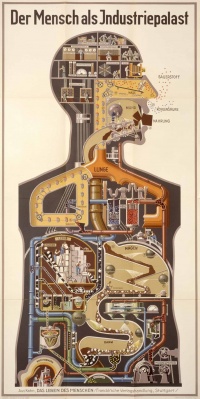 Watch the video here: http://www.youtube.com/watch?v=__OGncEPgrE
Watch the video here: http://www.youtube.com/watch?v=__OGncEPgrE
The Body and the Metaphors of the Engine
The article examines the specific language used to describe norms and models employed to explain the body, language on this subject that is reused and thus may be deemed, as with any discourse, to have an effective function ; in other words, to be a language that has practical efficacy in reality. http://recherche.univ-montp3.fr/cerfee/article.php3?id_article=191
Natural Selection & Machines ?
Evolution
The four common mechanisms of evolution :
•• Natural Selection -> Directional - Stabilizing - Disruptive
•Genetic Drift
•Mutation
•Gene flow
•• Artificial Selection
•• Sexual Selection
Fisherian Runaway theory
The quandary of female choice: This leads to an interesting question: how did female choice for traits like a long, colorful tail evolve? After all, if a female chooses a male with a long, awkward tail, her sons will probably have a similar tail—and that tail might hurt their chances of survival by attracting predators. How could natural selection act to produce a preference for a disadvantageous trait?
http://evolution.berkeley.edu/evosite/evo101/IIIE3aRunawayselec.shtml
Migration
Mitochondrial DNA based chart of large human migrations (Numbers are millenia before present)
Body Politics
Inscriptions identify parts of the human body with functions and offices of certain social classes and institutions of government. The resulting hierarchy of political and social values corresponds to the traditional evaluations of the organs of the human body in ancient and medieval anatomical and philosophical texts. For example, occupying the representational and metaphorical top of the hierarchy of the body politic is the king who is its head. As the most distinctive part of the human anatomy, in which the soul, reason, intelligence, and sensations reside, the head is the ruling principle to which all other parts of the human body and the body politic are subject. Next, associated with the vital human faculties of vision and hearing, the seneschals, bailiffs, and provosts and other judges are compared to the eyes and ears of the body politic. The counsellors and wise men are linked to the essential function of the heart. As defenders of the commonwealth, the knights are identified with the hands. Because of their constant voyages around the world, the merchants are associated with the legs. Finally, laborers, who work close to the earth and support the body, are its feet. http://publishing.cdlib.org/ucpressebooks/view?docId=ft4m3nb2n4;chunk.id=d0e7978;doc.view=print
http://en.wikipedia.org/wiki/The_Belly_and_the_Members
Social Darwinism
Many people living in nineteenth century society believed in the concept of Social Darwinism. According to Social Darwinism, humans were going through an evolutionary process in which the fittest would survive, and the weakest would perish. Obviously, the wealthy and successful members of society were the fittest, and the poor were the weak or unfit. Wealthy industrialists actively supported this concept as it reinforced their belief that their success in life was a product of their superiority over the inferior masses. Government or social intervention programs on behalf of the poor were inadvisable under the Social Darwinist belief. Such programs would enable the unfit to survive and reproduce, rather than allowing them to die out, naturally, on their own.
Lipid Rafts
A Intracellular space or cytosol
B Extracellular space or vesicle/Golgi apparatus lumen
1. Non-raft membrane 2. Lipid raft 3. Lipid raft associated transmembrane protein 4. Non-raft membrane protein 5. Glycosylation modifications (on glycoproteins and glycolipids) 6. GPI-anchored protein 7. Cholesterol 8. Glycolipid http://cellbiology.med.unsw.edu.au/units/science/lecture0803.htm
Signal transduction is initiated by complex protein–protein interactions between ligands, receptors and kinases, to name only a few. It is now becoming clear that lipid micro-environments on the cell surface — known as lipid rafts — also take part in this process. Lipid rafts containing a given set of proteins can change their size and composition in response to intra- or extracellular stimuli. This favours specific protein–protein interactions, resulting in the activation of signalling cascades.
Certain lipids and cholesterol in the cell membrane which are comparatively more rigid and can move around in the cell membrane. http://www.youtube.com/watch?v=73ghXv3nVKA
Satyajit Mayor (NCBS) http://www.ncbi.nlm.nih.gov/pubmed/9723621?ordinalpos=2
STRUCTURAL DNA NANOTECHNOLOGY
On Wed. Sept. 14th 2011 Yamuna Krishnan from NCBS visited the Srishti BioMod team. Her talk was First Blueprint, Now Bricks: DNA is Construction Material on the Nanoscale
[[Image: ]]
Here are some of the notes
SCALE & THE FRACTAL DIMENSION
- We can Create Architecture using DNA
- HOW SMALL IS SMALL? Seemingly every Nanotech talk starts with zooming in and talking about Order of Magnitude
- What are the metaphors that are constructed in showing the scale shift: Power, Delicate, Fragile
- As a comparison from Art/Cultural History: Buckminster Fuller Breathes on a Golf Ball and says something like "the dew from my breath is all of the freshwater on the planet. So take care….
- Is there a Fractal Dimension in nanotechnology.
- i.e. we have been talking about the cell as a city or a computer, but we also talk about the planet/Gaia as a city or a computer, how do these scales relate to each other?
- Where does EMERGENCE happen - If the cell is an upward metaphor of the world (LIke body metaphor for the world) there is no emergence at the nano scale -
- Architecture is the human extension of Geology "Make Architectures Out of Something" see Delanda on Arch. As Geology - Moving Rocks / Inorganic Material Around (Perhaps in Permaculture Architecture IS a Tree not a rock)
Complexity & Control
- Do Chemists like Emergence & Complexity. Control?
- Self Assembly in an expected way, but what about in an unexpected way?
- How many interacting nano-switches would you need in order to have EMERGENT/COMPLEX BEHAVIOR?
- Escaping the Overcode -
- Not Control but Surprise/Variation
- DNA Crystals - Self assembling
- How will you know/ would one recognize complex behavior.
HCI of Nanotechnology
- Which leads to the question: Who is Nanocomputing for?
- What are the HCI implications for Nanocomputing?
How does it include / exclude non-human actors and matters of concern?
Technology is Magic
- " We DON'T Need a reason to do Science & Art - We Do it b/c We are Human "
- Technology: So Much a Part of Life you don't notice it. Any sufficiently sophisticated technology can not be distinguished magic.
- As long as you are noticing technology it hasn't quite integrated itself.
2 Ways of Looking at Technologies
- Architecture: Make constructions that reflect your way of seeing the world
- Technology: A mode of communication
- Switching Devices: What kinds would you use?
Appropriate Nanotechnology?
- Tool-Making: recreating all of the functionalities of MacroTech on the NanoScale.
- (But what if the current technology doesn't do what we want it too?)
How do you use DNA nanorods on the nanoscale?
- Persistence Length = 50 nm
- Nature has given us a bunch of rigid rods
- DNA - Sugar Phosphate backbone
- Glue - Sticky end
- Has a code attached to it in the order of the bases (cryptography)
Architecture Types
- Rigid Scaffolds or Dynamic Objects (Undergo transitions and is reversible)
- Scienctists have to be showing that they are doing useful things
- 'RIGID // Basket - Rigid but has utility
- DYNAMIC // Scissors-
History of NanoTech
- DNA can be cut, pasted & copied
- Molecular Biologists knew about this 40 & 50 years ago
- 2 Ways in which you can do SCIENCE
- Mode of DISCOVERY (ASking a Question - Biology)
- Mode of INVENTION (Create new things for the joy of creating new things - Chemist)
- Taking things of lower value and joining them together and making things of more value
- Who is the patron? Who allows / prevents the creation of new things
Tools Available
- You need to be able to manipulate this material to make new things
- DNA-cutting enzymes
- DNA-pasting enzymes
- DNA-copying enzymes (amplify)
- You can do with DNA with what you could do with Microsoft Word
Why This Took Off (in Chemistry)
- You are not restricted to the DNA that nature provided you
- Ability to make DNA artificially in a chemistry lab
- MH Caruthers, SCience, 1985, 230 , 281-285
- Frustrated Chemistry - cathch A + B and make them react
- ZJ Gardener, Nature 2004, 431
DNA scaffolds in 1D
- You can spatially arrange things so they won't see each other
- POsition things not he same or opposite sides of pillars
DNA ORAGAMI - SHOULD BE CALLED DNA KNITTING!
- (Not Manly Enough?)
- A long piece of string wrapped on itself
- Flowers on a string - wrap in the shape as a pixel
- Scared to see Millions of Smiley Faces
[[Image:]]
DNA Architecture with 2D Scaffolds
- Gold NanoParticles at intersection for measuring
Assembly in 3D: DNA polyhedra
- Turberfield Science 2005
- Geometry -
- Abstraction vs. Naturalism -
- Greenberg Abstraction vs. Geometric Abstraction
What does the material want to do? [[Image:]]
- Polyhedra
- Copying the Western Cannon?
- Could you make Japanese prints or other spatial relationships?
Can we do something useful with these structures
- Icosohedron
- Compression~! - Only 3 parts / / /
- 2 jelly fish with sticky ends
- Platinum Shadows - 3D space to a 2D Problem
- Some guys will trap, some guys will be free
- Naturalism vs. Abstractionism *
- POWERFUL BUILDING BLOCK
- Flexibility & Position Things
- ' "There is a value to minimalism"
- "Forget about saving the world - we just want to know how things function"
- One possible functional use: targeting in-vivo
- Encapsulated polymer doesn't reduce functionality
- PH sensing
Dynamic Architectures
- DNA Nanomachines
- Seeman nature, 1999, 397
- Yurke Nature 2000, 406
- 1 Hour Switch - Design affordance / Constraint
Unusual Structures of DNA and Their Uses
- A pH biosensor from an I-motif based DNA nanoswitch
- Wear & tear over time - Organic - Enzyme so it doesn't decrease over time
- For the extent that you are using it the wear & tear is negligible
- END OF LIFE ISSUES?
- What is NanoComputing's E-Waste
- Is there E-waste of Nano-Computing?
- Ratiometric pH sensing
- IF WE ARE GOING TO DRAW A SHAPE, LET'S AT LEAST BE SURPRISED
- Control & Efficiency (compression)
- Complexity & Redundancy
- A Cell is A City
- Food from the village - shipped in by truck - feeds itself from the outside
- Surprise - that something that was artificially engineered could perform qualitatively and quantitatively
- Engineering fallacy - Efficiency as a fitness function
Increasing infrastructure //
STABILITY OF DOMAINS
- Give it a choice What does DNA want to do?
- If you give DNA a choice….working along with the flexibility of the DNA
- The angle of your joint can not be controlled
- Let's provide an environment where DNA can decide the curvature
- Enough incentive for the DNA would stick - Maximum satisfaction
- The angle is enduced by the environment
- Allow it different possibilities for being satisfied for maximum base pairing
- Giving a system a choice
Icosohydron - made Polymerize into many shapes Flat sheets
WHAT DOES DNA WANT - AGENCY
- Create Conditions that Work with the Material rather than against it
- Melting Temperature
- allowable angles -
Articles in reference- http://pubs.rsc.org/en/Content/ArticleLanding/2010/DT/c0dt00238k
WHAT HAPPENS TO THE NANOBOTS?
- FREQUENCY SPECTRUM OF NANOTECHNOLOGY
- Ends break apart if you shine light at a frequency
- Photocleavable levers - at a wavelength of light!!! (frequency spectrum)
- Nanotechnology Frequency Spectrum (communication)
CAN THE SMALLER STRUCTURES BE LEFT IN THE BODY?
- "Smart" Nanostructures ->
THE THREE
Nano COMPUTING
"DNA is one of the most promising candidates for molecular computing." -Richard Jones
Dennis Bray pointed out that the fundamental purpose of many proteins in cells seems to be more to process information than to effect chemical transformations or make materials.
http://www.pdn.cam.ac.uk/groups/comp-cell/Papers/Bray95a.pdf
Mechanisms such as allostery permit individual protein molecules to behave as individual logic gates; one or more regulatory molecules bind to the protein, and thereby turn on or off its ability to catalyse a reaction. If the product of that reaction itself regulates the activity of another protein, one can think of the result as an operation which converts an input signal conveyed by one molecule into an output conveyed by another, and by linking together many such reactions into a network one builds a chemical “circuit” which in effect can carry out computational tasks of more or less complexity.
http://www.softmachines.org/wordpress/?p=947
Logic gates are an interesting concept that may also be a foreign one for most people. They are extremely small structures that operate by changing data flowing through a computer into a sequence of signals that the computer utilises to complete a multitude of operations. Logic gates in our current world of technology involve the processing of electronic alerts from substances such as silicon, which take two signals that are inputted and then translate these into a single output to allow for complicated operations. Previously, logic gates used in computers were comprised of electronic structures that picked up signals from transistors. Logic gates made of DNA, however, are an entirely different concept. DNA logic gates are extremely small and they pick up various fragments of a genome as input before creating a single output from the fragments. Try to imagine a gate joining two DNA inputs to allow their end bits to lock. To fill in any gaps, an enzyme called DNA ligase creates an effective seal, which then results in a new strand. When electrophoresis is used, a scientist can measure the length of this new strand, thus giving an answer to the input strands. http://www.exploredna.co.uk/challenges-dna-computing.html
Computing with DNA - the manipulation of DNA to solve mathematical problems is redefining what is meant by "computation".
http://www.cs.virginia.edu/~robins/Computing_with_DNA.pdf
Surpassing silicon? http://computer.howstuffworks.com/dna-computer1.htm
What DNA Wants?
DNA molecules comprise a backbone of repeated sugar–phosphate units, with one of the four bases — adenine (A), cytosine (C), guanine (G) or thymine (T) — attached to each sugar. The twisting ladder of the double helix is formed by combining (or hybridizing) two antiparallel DNA strands, which are held together by hydrogen bonds between the complementary bases: adenine to thymine (A–T) and cytosine to guanine (C–G). By exploiting these exquisite base-pairing rules, which provide DNA with its ability to pass genetic information from generation to generation, self-assembled structures can be built simply by programming sequences of DNA — jigsaw pieces for one-, two- or three-dimensional puzzles. This process, combined with the current ability to synthesize almost any sequence in an automated fashion, means that it is possible to make new structures and devices that are not found in nature.
The Golden Ratio
If the DNA nano structures were allowed to 'stick' to each other naturally, without enforcing a fixed structure on them, what form would they take? Would they fall into the Golden Ratio?
In mathematics and the arts, two quantities are in the golden ratio if the ratio of the sum of the quantities to the larger quantity is equal to the ratio of the larger quantity to the smaller one. The golden ratio is an irrational mathematical constant, approximately 1.61803398874989...Adolf Zeising, whose main interests were mathematics and philosophy, found the golden ratio expressed in the arrangement of branches along the stems of plants and of veins in leaves. He extended his research to the skeletons of animals and the branchings of their veins and nerves, to the proportions of chemical compounds and the geometry of crystals, even to the use of proportion in artistic endeavors.
In contrast, "You won't find Fibonacci numbers everywhere in the natural world -- many plants and animals express different number sequences. And just because a series of numbers can be applied to an object, that doesn't necessarily imply there's any correlation between figures and reality. As with numerological superstitions such as famous people dying in sets of three, sometimes a coincidence is just a coincidence. "
http://science.howstuffworks.com/environmental/life/evolution/fibonacci-nature1.htm
"The golden ratio is expressed in spiraling shells. In the above illustration, areas of the shell's growth are mapped out in squares. If the two smallest squares have a width and height of 1, then the box to their left has measurements of 2. The other boxes measure 3, 5, 8 and 13."
Time Capsule
THIS IS WHERE IT LED
TIME CAPSULE
The 1989 Oxford English Dictionary defines a time capsule as "a container used to store for posterity a selection of objects thought to be representative of life at a particular time." http://www.museumonmainstreet.org/exhibs_yesterdays/yesterdays_resources.htm
History of time capsule http://listverse.com/2009/04/27/top-10-incredible-time-capsules/ http://www.queenstribune.com/archives/anniversaryarchive/anniversary98/tb_an_capsules.html http://www.lomography.com/magazine/lifestyle/2011/03/18/a-brief-history-of-time-capsules
Look up fossils The modern use of the word 'fossil' refers to the physical evidence of former life from a period of time prior to recorded human history. This prehistoric evidence includes the fossilised remains of living organisms, impressions and moulds of their physical form, and marks/traces created in the sediment by their activities. There is no universally agreed age at which the evidence can be termed fossilised, however it's broadly understood to encompass anything more than a few thousand years. http://www.discoveringfossils.co.uk/whatisafossil.htm
Potential uses of the time capsule
Chhavi-if we make the capsule in a way, that its supposed to break after a certain number of years, and according to the predictions of the future, embed in it atoms of something that is predicted to not exist anturally later. very basic example- if it is predicted that you wont be able to find methane in its pure state. We can embed 'One molecule of methane-Green house gas" that can be replicated later on.
So it releases itself in the atmosphere. "The return of life" :p
Seed bank http://news.bbc.co.uk/2/hi/science/nature/4605398.stm Norway is planning to build a "doomsday vault" inside a mountain on an Arctic island to hold a seed bank of all known varieties of the world's crops.
Modern noahs arc http://www.dutchdailynews.com/modern-noahs-ark/
http://www.squidoo.com/noahsarkreplica
Indian noah?? http://en.wikipedia.org/wiki/Manu_(Hinduism)
NANO COMPUTING
MITS ALTAIR- early computing kits The MITS Altair 8800 was a microcomputer design from 1975 based on the Intel 8080 CPU and sold by mail order through advertisements inPopular Electronics, Radio-Electronics and other hobbyist magazines. The designers hoped to sell only a few hundred build-it-yourself kits to hobbyists, and were surprised when they sold thousands in the first month.[1] The Altair also appealed to individuals and businesses who just wanted a computer and purchased the assembled version.[2] Today the Altair is widely recognized as the spark that led to the microcomputer revolution of the next few years: The computer bus designed for the Altair was to become a de facto standard in the form of the S-100 bus, and the first programming language for the machine was Microsoft's founding product, Altair BASIC.
http://www.computercloset.org/MITS_Altair_8800_InteriorView1.jpg
Homebrew computing club http://www.atariarchives.org/deli/homebrew_and_how_the_apple.php http://www.swtpc.com/mholley/Homebrew/Homebrew.htm http://www.computerhistory.org/revolution/personal-computers/17/312
How to build a simple computer? http://www.allaboutcircuits.com/vol_6/chpt_3/15.html
What is the simplest computer?
Universal Turing Machine "Turing machines are not intended to model computers, but rather they are intended to model computation itself" http://www.wolframscience.com/prizes/tm23/TM23Proof.pdf in relation to the link yashas sent us
Finite state automaton "A finite-state machine (FSM) or finite-state automaton (plural: automata), or simply a state machine, is a behavioral model used to design computer programs. It is composed of a finite number ofstates associated to transitions. A transition is a set of actions that starts from one state and ends in another (or the same) state. A transition is started by a trigger, and a trigger can be an event or a condition. A state describes a behavioral node of the system in which it is waiting for a trigger to execute a transition. Typically a state is introduced when the system does not react the same way to the same trigger. In the example of a car radio system, when listening to the radio (in the radio state), the "next" stimulus means going to the next station. But when the system is in the CD state, the "next" stimulus means going to the next track." - wiki
Look up Dna computing:
http://www.pdn.cam.ac.uk/groups/comp-cell/Papers/Bray9
http://www.benthamscience.com/cnano/sample/cnano1-1/D0011N.pdf
Biocomputer made of RNA understands Boolean logic : http://blogs.discovermagazine.com/80beats/2008/10/17/biocomputer-made-of-rna-understands-boolean-logic/
http://computer.howstuffworks.com/dna-computer1.htm
How long does DNA survive?
http://www.guardian.co.uk/science/2005/jan/13/thisweekssciencequestions1
http://airborneinfection.blogspot.com/2007/02/uv-destroys-dna-in-flash.html
Just see the images maybe: http://www.crystalinks.com/anunnaki05.html
http://www.jaronlanier.com/roach.html- DNA as time capsusules. http://scienceblogs.com/notrocketscience/2009/05/dna_sculpture_and_origami_-_a_meeting_of_art_and_nanotechnol.php
Fossils and DNA http://www.biologynews.net/archives/2006/02/02/ancient_fossil_dna_found_preserved_in_crystal.html
I remember we were talking about making a kit: http://www.norgenbiotek.com/display-product-salviacollectionandpreservation.php?ID=385 http://www.norgenbiotek.com/product_resources/blood_dna_preservation_buffer_3x_blood_dna_preservation_buffer_3x__protocol_29111_1277.pdf
DNA 'Signatures' http://spittoon.23andme.com/2008/08/28/faces-in-a-crowd-new-dna-technique-can-pick-one-persons-dna-signature-out-of-hundreds/
DISCUSSION HERE:
To start off. :----------------------------------------------------
cant we make the icosa structure in a way that it resists uv till it reaches stratosphere and then breaks and releases the ozone?
we have very little knowledge on ozone or atleast i do. first what are the properties? what happens if it escapes here? in the stratospehe how does it function, why is it crucial or is it? Ozone . It is an allotrope of oxygen that is much less stable than the diatomic allotrope (O2). Ozone in the lower atmosphere is an air pollutant with harmful effects on the respiratory systems of animals and will burn sensitive plants; however, the ozone layer in the upper atmosphere is beneficial, preventing potentially damaging electromagnetic radiation from reaching the Earth's surface.Ozone is present in low concentrations throughout the Earth's atmosphere.
see what im trying to say since then is.. instead of trying to preserve that structure (time capsule) lets use its property of breaking under whatever conditions. Study those conditions and find a use according to that. Exactly like Ozone idea.
But the question is whether we can trap the ozone or not. I believe not how does gas compression and all that work? I don't know if it is an appropriate question but ozone exists in different states right? nope its either ozone or oxygen. in the stratosphere it keeps alternating because of some reaction dont know whatif the molecule size is exactly how much space there is, in the icosa..
where we can use the UV or temprature for our capsule to break and release something we want in a particular time and space? ya that also. DNA can survive, even if the ligase is such that it breaks or depletes in some conditions.. it works for us. oye we can concentrate on the bonds breaking and do something related to waste management nanoscale? yeahwastes like? something like "there is plenty of junk at the bottom"so what about it? you want to trap it/clean it?and what kind of impurities. We'll need to study on that ..as good as the ozone.
it would be a nice way to remove nanoscale impurities.^ i think certain chemicals need to be really pure for certain things so in places where 100% purity is needed...impurities specific to those chemicals etc. not sure but at those conditions i dont think impurities will survive which conditions? I mean there will be certain specifications at which certain atoms survive at the nanoscale-do you think there will be impurities at that state? hmm hadn't thought of that...ok. It's a question/thought. Might be incorrect. are we talking about sterilisation? 100% purity?
Example of a place where purity till the nanoscale is needed.? and how is it done otherwise.. these days..hmm mo is questioning if there actually is any dirt/impurity at that scale... i think the stuctures that we make can be called dirt if taken into perspective
we dont want it to reach the stage where its starts mutatingthe dna inside our body maybe we do no we dont
hey we can make organic sunscreen. that would be awesome sunscreen is already a nanomaterial....yup benzo something but an organic one might be safer no? or wat if we put nano droplets of sunscreen n release it in the atmosphere??
PROTOCOL FOR BUILDING A DNA COMPUTER
from [1]
Methods Synthetic DNA Double-stranded synthetic DNA molecules were prepared by annealing 2,000 pmol of commercially obtained deoxyoligonucleotides (Sigma-Genosys) in a ®nal volume of 10ml of 10mM Tris-HCl buffer, pH8.0, containing 1mM EDTA and 50mM NaCl. The annealing was performed by heating the solution to 94 VC followed by slow cooling. The formation of a duplex was con®rmed by native PAGE (20%). The oligomers were 5W-phosphorylated and PAGE-puri®ed by the supplier and used without further puri®cation. Input molecules These were constructed stepwise by ligating one or more synthetic DNA segments of thedesired sequence to a 1,457-bp fragment obtained by digestion of the pBluescript II SK+ plasmid (Stratagene) with FokI, followed by polymerase chain reaction (PCR) ampli®- cation of the coding segment and a 300- or 325-bp tail region. The sequences of the resulting input molecules were con®rmed by sequencing.
Output-detecting molecules
The output-detecting molecule for the S0 output (S0-D) was formed by ligating a synthetic adapter of 30 bp containing a FokI recognition site to a 181-bp fragment obtained by digesting the pBluescript II SK+ plasmid with FokI, PCR ampli®cation and additional FokI digestion to form the 160-bp fragment bearing the desired sticky end. The output-detecting molecule for the S1 output (S1-D) was obtained by PCR ampli®cation of a 285-bp fragment corresponding to positions 1,762±2,047 of the pBluescript II SK+ plasmid followed by FokI digestion of the PCR product to form a 250-bp fragment.
Computation reactions
Reactions were set by mixing 2.5 pmol of the input molecule, 1.5 pmol of each output- detection molecule and 15 pmol of each transition molecule with 12 units of FokI and 120 units of T4 DNA Ligase (both from New England Biolabs) in 120 ml of NEB4 buffer supplemented with 1 mM ATP and incubating at 18 VC for 70 min. In case of multiple inputs in the same reaction, equal amounts were used, summing up to 2.5 pmol. The mixtures were puri®ed by the Qiagen PCR puri®cation kit and eluted using 30 ml EB buffer (Qiagen). Aliquots (10 ml) were assayed by gel electrophoresis using 3% MetaPhor agarose (FMC Bioproducts) unless indicated otherwise. The lengths of the DNA species were veri®ed using a commercial 50-bp DNA step ladder (Promega). To further con®rm that output reporting molecules were formed as expected, we ampli®ed by PCR and sequenced the output-detection molecule/output molecule junction region in both output-reporting molecules S0-R and S1-R and found the expected sequences (not shown).
Laboratory techniques with potential use for computation
-- Synthesizing a desired polynomial--length strand, used in all models. In standard solid-phase DNA synthesis, a desired DNA molecule is built up nucleotide by nucleotide on a support particle in sequential coupling steps. For example, the first nucleotide (monomer), say A, is bound to a glass support. A solution containing C is poured in, and the A reacts with the C to form a two-nucleotide (2-mer) chain AC. After washing the excess C solution away, one could have the C from the chain AC coupled with T to form a 3-mer chain (still attached to the surface) and so on.
-- Mixing: pour the contents of two test tubes into a third one to achieve union. Mixing can be performed by rehydrating the tube contents (if not already in solution) and then combining the fluids together into a new tube, by pouring and pumping for example.
-- Annealing : bond together two single-stranded complementary DNA sequences by cooling the solution. Annealing in vitro is also known as hybridization.
-- Melting : break apart a double-stranded DNA into its single-stranded complementary components by heating the solution. Melting in vitro is also known under the name of denaturation.
-- Amplifying (copying) : make copies of DNA strands by using the Polymerase Chain Reaction (PCR). PCR is an in vitro method that relies on DNA polymerase to quickly amplify specific DNA sequences in a solution. Indeed, the DNA polymerase enzymes perform several functions including replication of DNA. The replication reaction requires a guiding DNA single-strand called template, and a shorter oligonucleotide called a primer, that is annealed to it. Under these conditions, DNA polymerase catalyzes DNA synthesis by successively adding nucleotides to one end of the primer. The primer is thus extended in one direction until the desired strand that starts with the primer and is complementary to the template is obtained. PCR involves a repetitive series of temperature cycles, with each cycle comprising three stages: denaturation of the guiding template DNA to separate its strands, then cooling to allow annealing to the template of the primer oligonucleotides, which are specifically designed to flank the region of DNA of interest, and, finally, extension of the primers by DNA polymerase. Each cycle of the reaction doubles the number of target DNA molecules, the reaction giving thus an exponential growth of their number.
-- Separating the strands by length using a technique called gel electrophoresis that makes possible the separation of strands by length. The molecules are placed at the top of a wet gel, to which an electric field is applied, drawing them to the bottom. Larger molecules travel more slowly through the gel. After a period, the molecules spread out into distinct bands according to size.
-- Extracting those strands that contain a given pattern as a substring by using affinity purification. This process permits single strands containing a given subsequence v to be filtered out from a heterogeneous pool of other strands. After synthesizing strands complementary to v and attaching them to magnetic beads, the heterogeneous solution is passed over the beads. Those strands containing v anneal to the complementary sequence and are retained. Strands not containing v pass through without being retained.
-- Cutting DNA double-strands at specific sites by using commercially available restriction enzymes. One class of enzymes, called restriction endonucleases, will recognize a specific short sequence of DNA, known as a restriction site. Any double-stranded DNA that contains the restriction site within its sequence is cut by the enzyme at that location.
-- Ligating : paste DNA strands with compatible sticky ends by using DNA ligases. Indeed, another enzyme called DNA ligase, will bond together, or ``ligate, the end of a DNA strand to another strand.
-- Substituting : substitute, insert or delete DNA sequences by using PCR site-specific oligonucleotide mutagenesis. The process is a variation of PCR in which a change in the template can be induced by the process of primer modification. Namely, one can use a primer that is only partially complementary to a template fragment. (The modified primer should contain enough bases complementary to the template to make it anneal despite the mismatch.) After the primer is extended by the polymerase, the newly obtained strand will consist of the complement of the template in which a few oligonucleotides have been ``substituted by other, desired ones.
-- Marking single strands by hybridization: complementary sequences are attached to the strands, making them double-stranded. The reverse operation is unmarking of the double-strands by denaturing, that is, by detaching the complementary strands. The marked sequences will be double-stranded while the unmarked ones will be single-stranded.
-- Destroying the marked strands by using exonucleases, or by cutting all the marked strands with a restriction enzyme and removing all the intact strands by gel electrophoresis. (By using enzymes called exonucleases, either double-stranded or single-stranded DNA molecules may be selectively destroyed. The exonucleases chew up DNA molecules from the end inward, and exist with specificity to either single-stranded or double-stranded form.)
-- Detecting and Reading: given the contents of a tube, say ``yes if it contains at least one DNA strand, and ``no otherwise. PCR may be used to amplify the result and then a process called sequencing is used to actually read the solution. The basic idea of the most widely used sequencing method is to use PCR and gel electrophoresis. Assume we have a homogeneous solution, that is, a solution containing mainly copies of the strand we wish to sequence, and very few contaminants (other strands). For detection of the positions of A 's in the target strand, a blocking agent is used that prevents the templates from being extended beyond A 's during PCR. As a result of this modified PCR, a population of subsequences is obtained, each corresponding to a different occurrence of A in the original strand. Separating them by length using gel electrophoresis will give away the positions where A occurs in the strand. The process can then be repeated for each of C , G and T, to yield the sequence of the strand. Recent methods use four different fluorescent dyes, one for each base, which allows all four bases to be processed simultaneously. As the fluorescent molecules pass a detector near the bottom of the gel, data are output directly to an electronic computer. The bio-operations listed above, and possibly others, will then be used to write ``programs. A ``program will receive a tube containing DNA strands encoding information as input, and return as output either ``yes or ``no or a set of tubes. A bio-computation will consists of a sequence of bio-operations performed on tubes containing DNA strands.
Nanotechnology in Fiction
-from wikipedia-[2]
-Nano times
Building our own PCR
COMING SOON!!
Some links that we were looking at http://pimm.wordpress.com/2009/10/31/lavaamp-cheapest-pocket-pcr-thermocycler-dreamed-for-diy-biologists/ http://makezine.com/07/fingerprinting/ http://openpcr.org/build-it/ http://www.rsc.org/chemistryworld/news/2007/may/01050701.asp http://www.scribd.com/doc/104545/Mini-PCR-Machine
MITS ALTAIR-To start with!
VINTAGE COMPUTERS : http://www.vintagecomputer.net/altair-poptronics.cfm
